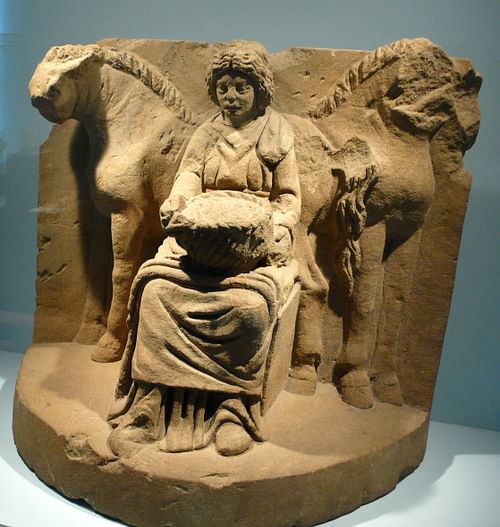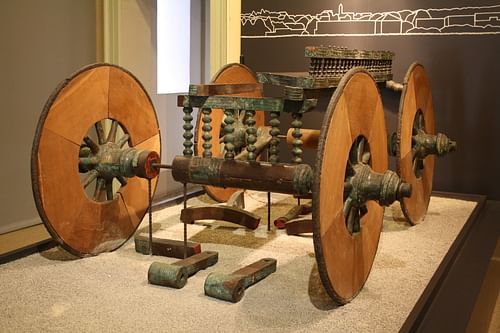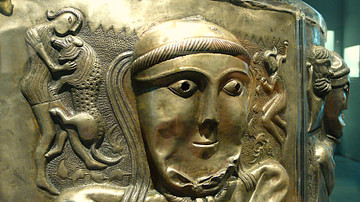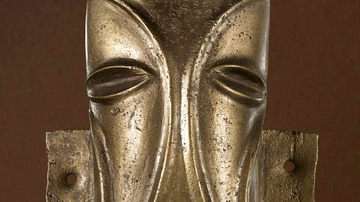Epona was a Celtic goddess. Her name contains an allusion to the horse: in Celtic, "epos" means “horse” and the suffix “-ona” affixed simply means “on”. Epona is the patron goddess of mares and foals. The oldest information about the Gallic goddess of horses is found in Juvenal (Satires, VIII, 155 ff). He writes: “... iurat / solam Eponam and facies olida ad praesepia pictas”. We can also find another text mentioning Epona in Minucius Felix (Octavianus, XXVII, 7): “Nisi quod vos et totos asinos in stabulis cum vestro vel [sua] Epona consecratis.”
The known inscriptions about Epona were excavated all around the territories corresponding to ancient Gaul and Germany, but also on the Danubian provinces, and even at Rome. The many inscriptions are often signed by soldiers, and found close to settlements, which seems to suggest that the inscriptions reveal, especially in the East, not an indigenous cult, but a military cult.
Epona occupied an important place in the Gallic religion, because the horse itself was important in the life of the Gauls. We can remember how the Gallic cavalry had destabilized the Roman legions during the Conquest. The veneration of the goddess logically then persisted in the army. Yet everything suggests that the common people adored her in rural areas. There remains, unfortunately, almost no trace of an official cult of Epona in large cities.
Epona's appearance in art varies in function depending on the origin of each representation. With few exceptions, Epona is always dressed and found in the presence of horses. Apart from these animals, she is typically shown alone, and sometimes depicted as celibate. While these features are found on all depictions, positions and attitudes of Epona and her horses vary depending on where they were found.
The first type of representation, found in north-eastern Gaul and in the Rhine region, shows the goddess seated on a mare, sometimes accompanied by a foal. Carried by a horse, she can act as a funerary symbol: on some steles, it is clear that she evokes the journey of the soul to the underworld (the representation of a woman to symbolize the soul of the deceased is consistent with folklore of ancient religions).
In the second type of representation, the goddess is surrounded by horses (which she sometimes feeds). Such representations are found mostly in central Gaul. There is yet another way to represent Epona: she may be lying on a horse, half-naked (as found in Allerey, Burgundy). Her attributes are usually the cornucopia or peg. She is sometimes accompanied by a dog and is sometimes accompanied by gods, goddesses or spirits (local Mars, Hercules, or Silvanus depictions are frequently found).
When we have to study a Celtic deity, it is often useful to compare it with what is known of the Celtic tradition which has left mythological writings in Ireland. Even though the recording of mythological Celtic Ireland (and Wales) started at the beginning of the Middle Ages, and applies mainly to the British Isles, it is sometimes useful to try to establish links with the old Celtic traditions in which these stories came from.
Epona is often closer to the goddess Rhiannon Cymric (the name derives from a Celtic word “Rigantona” meaning “great queen”) appearing in the Mabinogi of Pwyll. In this kind of Arthurian romance, it is said that it was impossible to catch her when she rode on horseback, as she travelled so swiftly; she entertained guests at Harddlech, singing at meals. Rhiannon was married with Pwyll and Manawyddan. She may also have had a function to accompany the dead here too.
There are certainly similarities between Epona and Rhiannon, such as their attachments to horses, their role as a companion to the dead, but there are also differences in scope: the goddess Epona was single, while Rhiannon, seen as a queen, was married. Also, Epona was especially adored by the limes while Rhiannon existed in Celtic literature (especially so in Britain). Thus, if there are undeniable similarities between the two characters, it would be wiser not to equate them completely.







